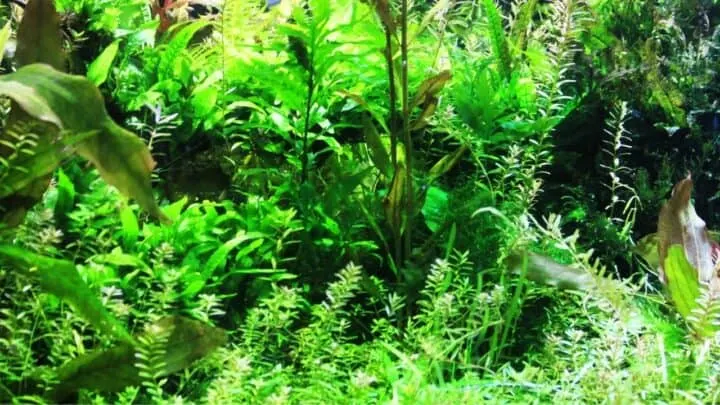In an aquarium, building a lovely carpet of plants can replicate huge open fields, provide feed, offer shelter for shrimp, and have a special attraction for aquarists.
The appropriate plant for your aquascape carpet can make a huge difference.
Some are harder to grow and manage than others, but they all have a somewhat distinct aesthetic.
However, if you really wish your aquarium to appear nice, you’ll have to learn how to cultivate plants appropriately.
Table of Contents
The Best Ground Covers for Aquarium Plants
Some of the most famous ground covers for aquarium plants include Monosolenium tenerum, Java moss, Christmas moss, and Crystalwort. Dwarf Hairgrass and Saggitaria Subulata also provide a cover for the aquarium’s ground.
The Best Ground Covers
Monosolenium Tenerum
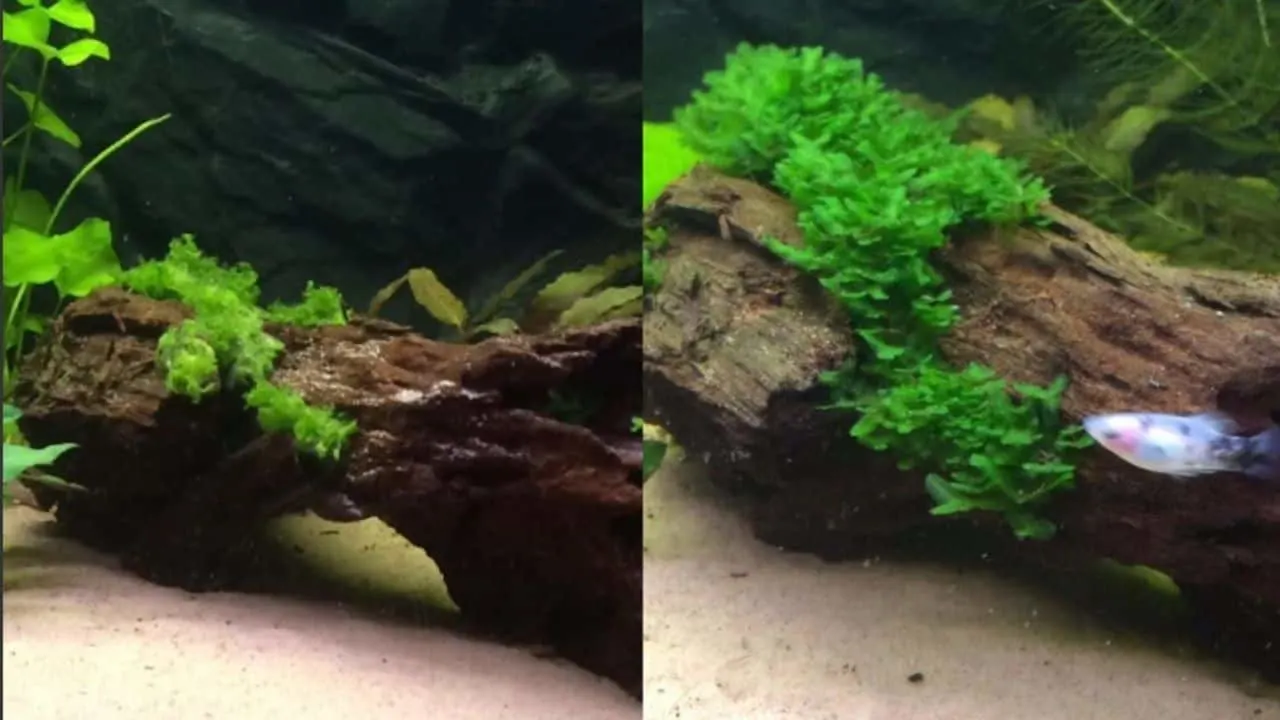
Photo Credit: @knerten.whippet.family on Instagram!
Monosolenium tenerum is a very uncommon plant that is distinctive and easy to maintain, making it an excellent aquarium ground cover.
Monosolenium tenerum penetrates and attaches to pebbles, stones, and wood using rhizoids. The thallus forks as it rises, forming a wavy, rippling pad of rich green foliage.
It has a strong resemblance to Crystalwort — only it is more enlarged, deeper, and bigger.
Monosolenium tenerum is a low-maintenance plant with a moderate rate of growth, unlike Crystalwort.
It draws nutrition straight from the surrounding water instead of roots, making it ideal for aquariums without enriched grounds. It is a fragile plant cover that will break if handled severely.
Java Moss
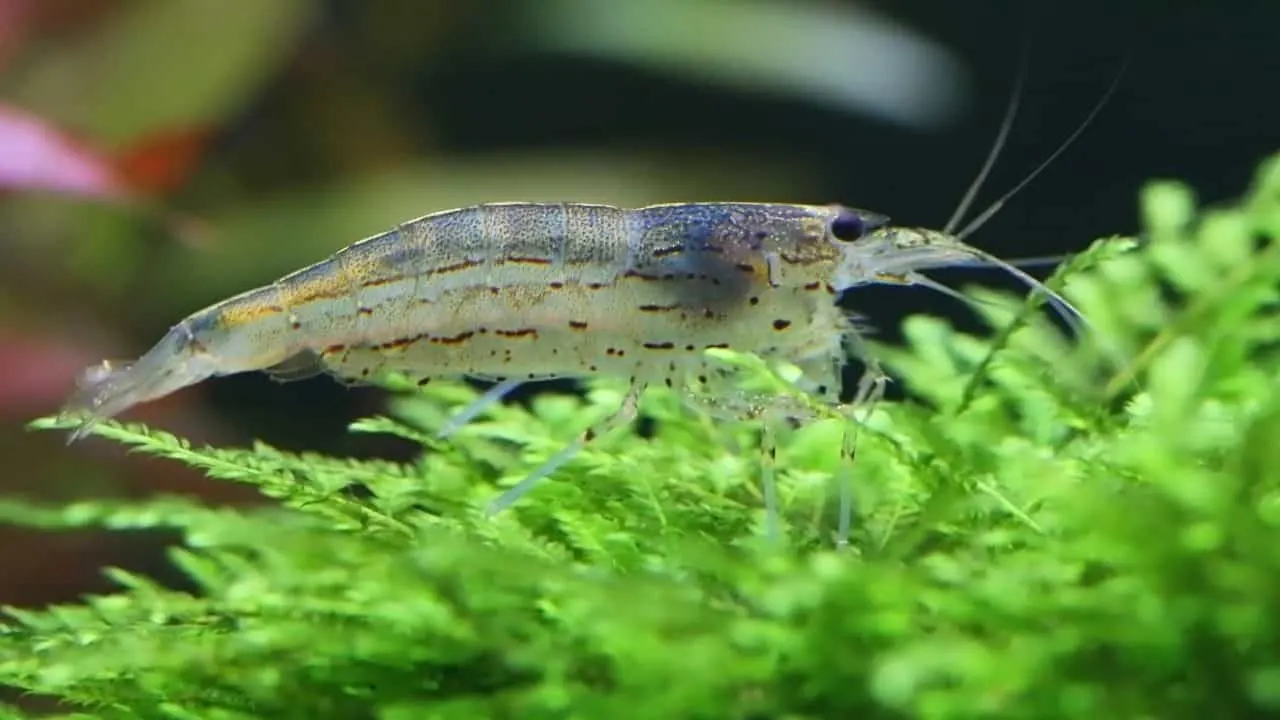
Java moss is among the ideal aquarium ground cover for beginners because it is easy to find and almost hard to destroy.
It is a multipurpose plant that can be utilized as a spreading foreground or midground plant, connected to rocks and driftwood, or can even be left floating independently.
Java moss may not need additional light, CO2, or fertilization, but it does enjoy it. Even with non-plant fluorescent illumination, you will observe the fast growth of the Java moss.
It is utilized as a spawning substrate for fish eggs and fry to mature safely from predators due to its dense, lush growth and unchallenging character.
Propagation of java moss is fairly easy. You can cut the overgrown parts using scissors, dental floss, or a fishing line.
You can also bury the big sections under the substrate to maintain a clean look.
Christmas Moss
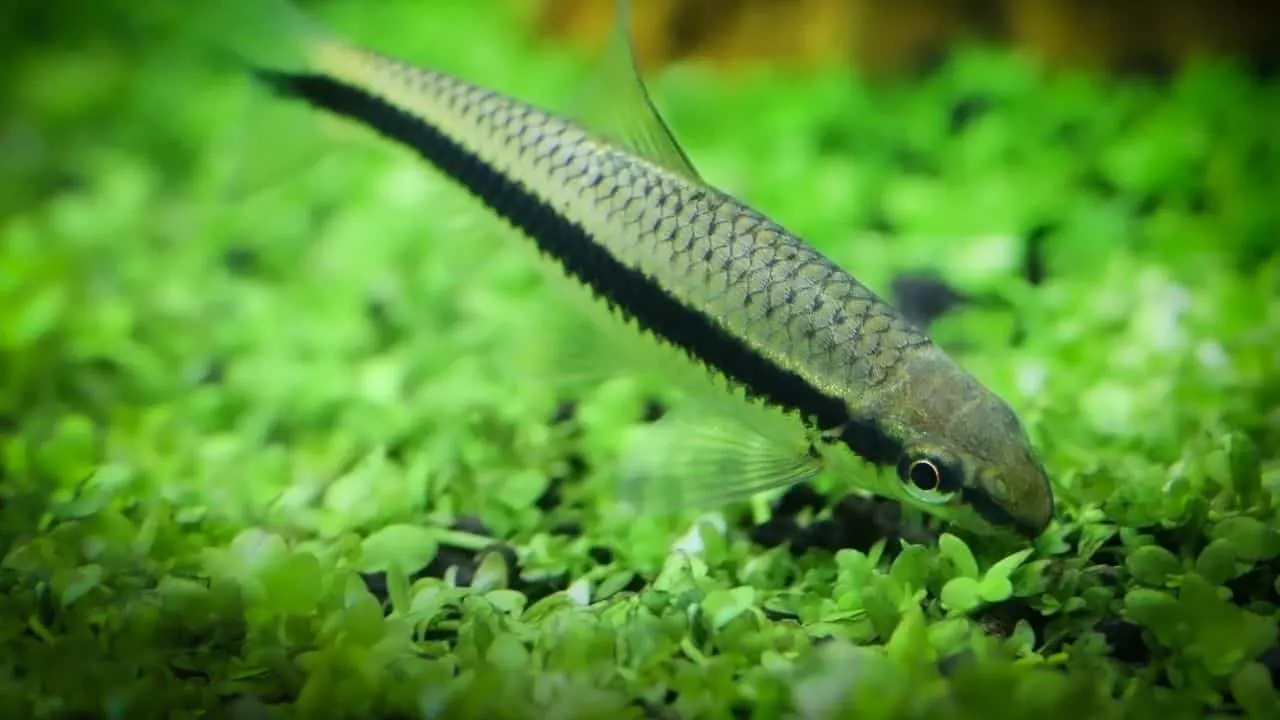
Christmas moss isn’t as hardy as Java moss, and it doesn’t develop as quickly. It has a more dense, branched pattern of development that resembles a fir forest, thus the title.
The smaller leaflets are rounder and emerge at a straight inclination to the stem. When left detached, it takes on a much more disorganized shape, like Java Moss.
Christmas moss could be used to cover the foreground, stones, and particularly wreckage in aquascaping. It is frequently used in nature-inspired aquascapes to simulate bonsai trees.
Christmas moss flourishes in moderate to high light settings, despite its low light and fertilizer requirements.
It doesn’t require a good substrate because it adheres to tough places rather than using genuine roots.
Additional CO2 aids development as well, but even under optimal circumstances, it develops slowly.
Crystalwort
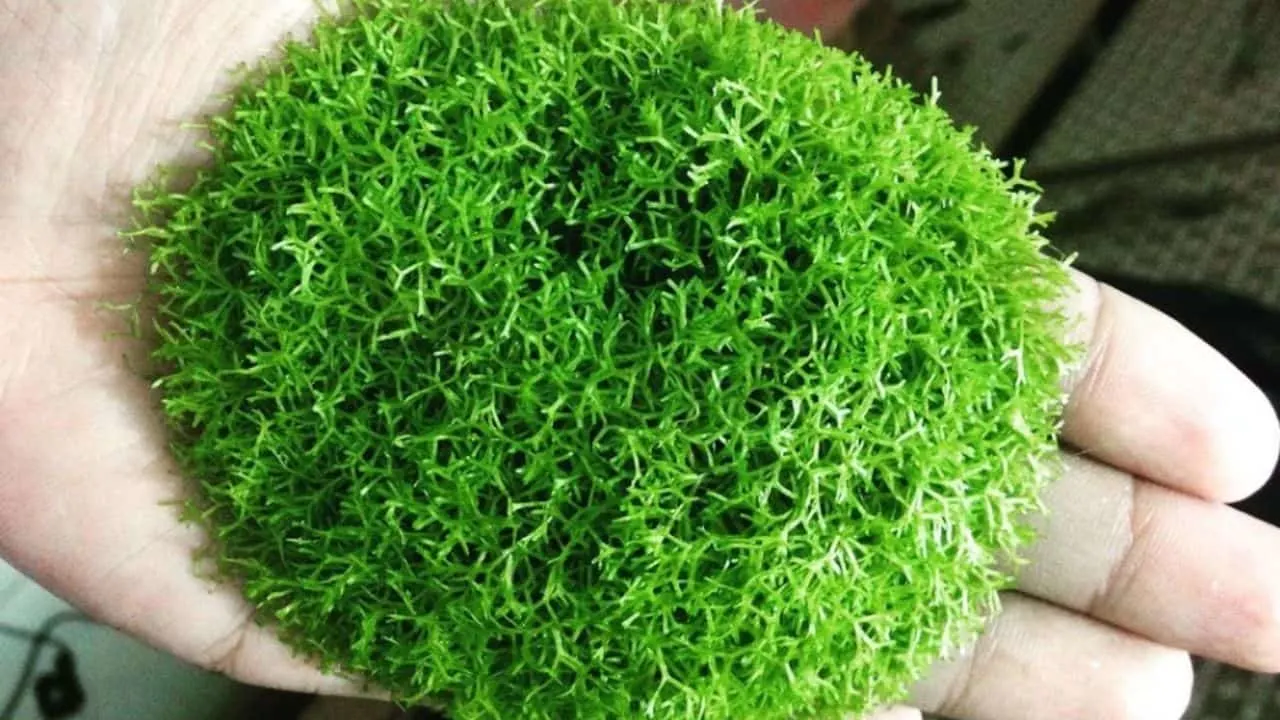
Photo Credit: @erfuu on Instagram!
Crystalwort seems like one of those frightening plants that are difficult to cultivate because so many experts use them in aquascaping.
However, the reality is quite the opposite. If you care for its requirements, this appealing liverwort variety is indeed remarkably easy to cultivate.
Takashi Amano introduced Crystalwort, which is a staple plant for the natural type aquascape. Crystalwort is usually seen drifting on the water’s top in nature.
If you’re cultivating it as a buried aquarium carpet plant, you’ll need light of around 2 to 3 watts per gallon.
Because Crystalwort does not absorb nutrition through its roots, more CO2 and nutrition in the surrounding water are required.
When given favorable circumstances, Crystalwort spreads like a weed, producing lovely oxygen bubbles as it photosynthesizes and will have to be trimmed regularly.
It takes its title from its cubic, crystal-like growing style. Crystalwort can be mounted to stones and logs and cultivated along the bottom.
When cultivated in low-light situations, it can also obscure itself, forcing bottom levels to turn brown if grown too thickly, demanding regular trimming.
Crystalwort attracts detritus and appears best in water that has been carefully filtered.
Dwarf Hairgrass
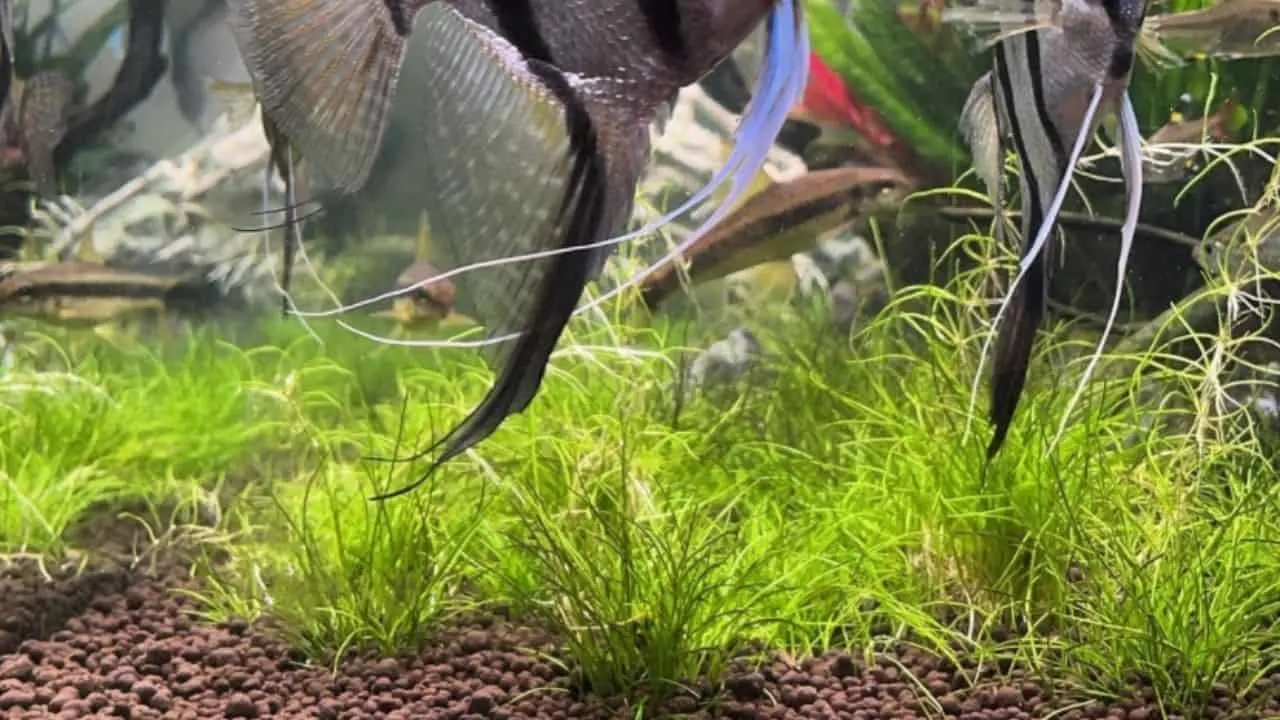
Photo Credit: @aquajungle on Instagram!
Dwarf Hairgrass, also called Dwarf Spikerush, is a salt-tolerant ground cover that can develop through immersion and submersion.
Whereas it develops significantly faster over water, it’s still a good option for aquascaping if you take a few steps to help it spread.
Dwarf Hairgrass is frequently sold as clusters in pots.
Although this is a typical growing pattern, if it is taken from the container and left in the sand, it will hardly do anything other than photosynthesizing and develop vertically.
We’ll need to divide our Dwarf Hairgrass into 4 to 6 blade pieces. These mini hairgrass plants can be planted 1-12 inches away in healthy or fine gravel soil to grow without overcrowding.
For this species, fine-grained sandy soils are preferable over coarse-grained soils. Dwarf hairgrass typically absorbs more minerals through its roots rather than through the surrounding water.
Although this species can endure reduced light levels, it requires medium to high lighting to cover. You’ll have a terrific aquarium ground cover if you maintain this under 2 inches tall and prune it regularly.
Sagittaria Subulata

Photo Credit: @aquagoekhan on Instagram!
Sagittaria Subulata, also known as Dwarf Sag, is a grassy plant that grows a little lower than dwarf hairgrass and has a wider leaf, unlike Dwarf Hairgrass.
It’s a light, open plant with more room among the leaves than other ground covers.
Therefore it is an ideal option for young fish and base feeders who need accessibility to the ground.
It may be cultivated in almost any tank with a range of lighting, fertilization, and CO2 settings. Dwarf Sag looks great in aquascapes with logs as the main substrate.
Frequently Asked Questions about the Best Ground Cover for Aquarium Plants
What type of substrate is ideal for ground covers?
Ground cover plants thrive on a substrate made of aquarium soil. The root structure is as massive as the plant’s visible portion above the ground for some plants. The extra nutrients that ground cover requires are provided by a dirt base, allowing roots to extend out more freely.
What is the right level of light needed for the ground cover plants?
Ground plants are the ones that are situated the farthest from the light. If they don’t get sufficient light, they will begin to grow bigger. As a safety measure, the plant spreads itself nearer to the light. If your carpet appears to be much higher and more brittle than expected, raise the amount of light in the aquarium.

Daniel has been a plant enthusiast for over 20 years. He owns hundreds of houseplants and prepares for the chili growing seasons yearly with great anticipation. His favorite plants are plant species in the Araceae family, such as Monstera, Philodendron, and Anthurium. He also loves gardening and is growing hot peppers, tomatoes, and many more vegetables.

